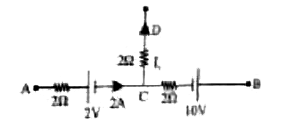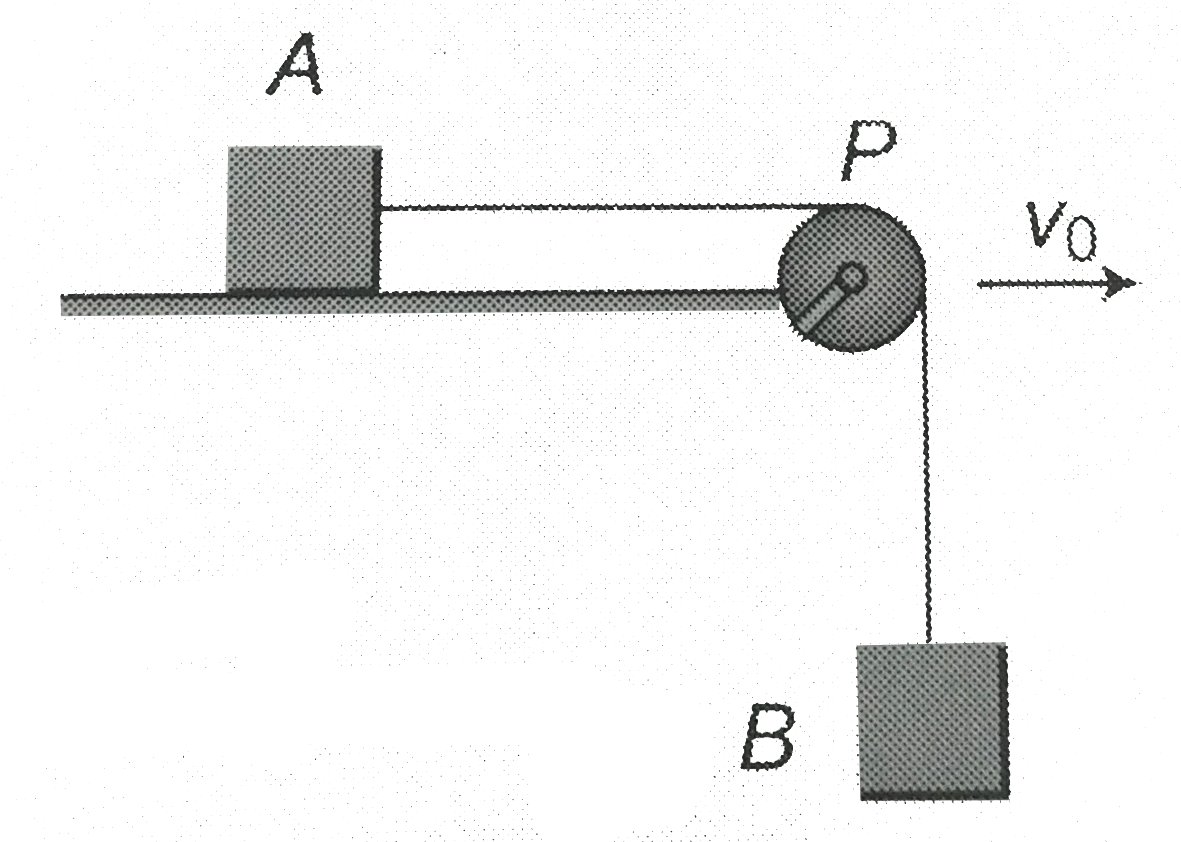In problem 40, if I is reversed in direction, then VB−VA equals
5V
10V
15V
20V
The correct Answer is:C
VB−LdIdt−15−IR=VA

VB−VA=IR+15+LdIdt
=5×1+15+5×10−13×(−10−3)=15 volt
Similar Questions
Knowledge Check
In the previous question, if the direction of I is reversed, VB−VA will be
A20VB15VC10VD5VA part of a circuit is shown in figure VR−VC is equal to 12 V. I1 is equal to
 A1AB2AC3AD4A
A1AB2AC3AD4AIf I=5A and decreasing at a rate of 102(A/sec) , then VB−VA
 A5VB10VC15VD20V
A5VB10VC15VD20V
In the above problem if given graph is between VAB and time. Then plot graph between VED and time.
View SolutionConsider an x-y plane and mark the locations A, B and C whose coordinates are given to be (5, 2), (5, 8) and (-5, 8) respectively. A uniform electric field of 200 N/C exists in space directed along the negative x-direction. Calculate (i)VB−VA(ii)VC−VA(iii)VB−VC.
View Solution
In the figure, the pulley P moves to the right with a constant speed v0. If the velocity of B is v in downward direction, find the velocity of A.
View SolutionTwo objects A and B are moving in opposite directions with velocities vAandvB respectively, the magnitude of relative velocity of A w.r.t. B is
View SolutionIf I is the current for a certain V, then reversing the direction of V keeping its magnitude fixed, does not produce a current of the same magnitude as Z in a
View Solution

